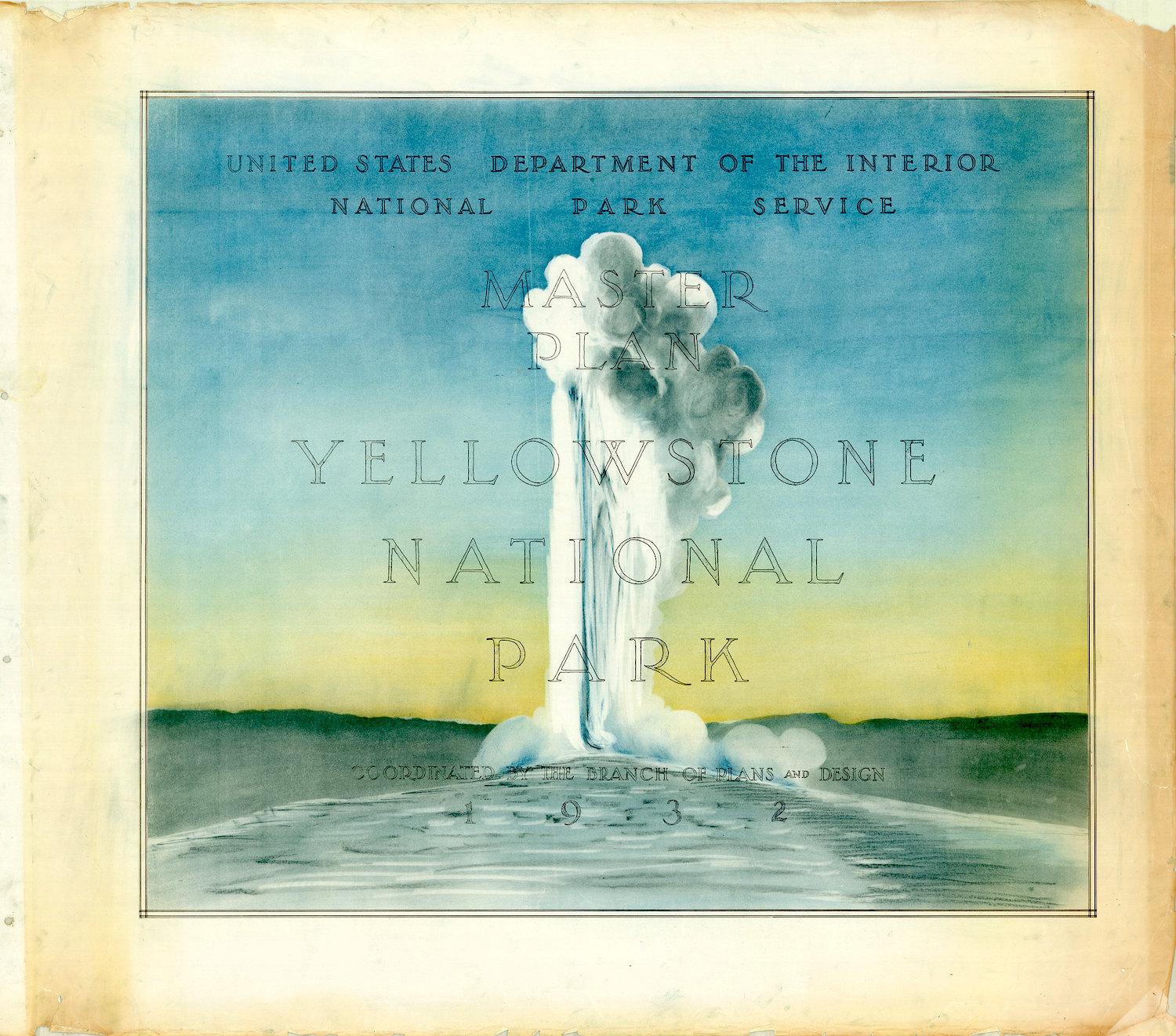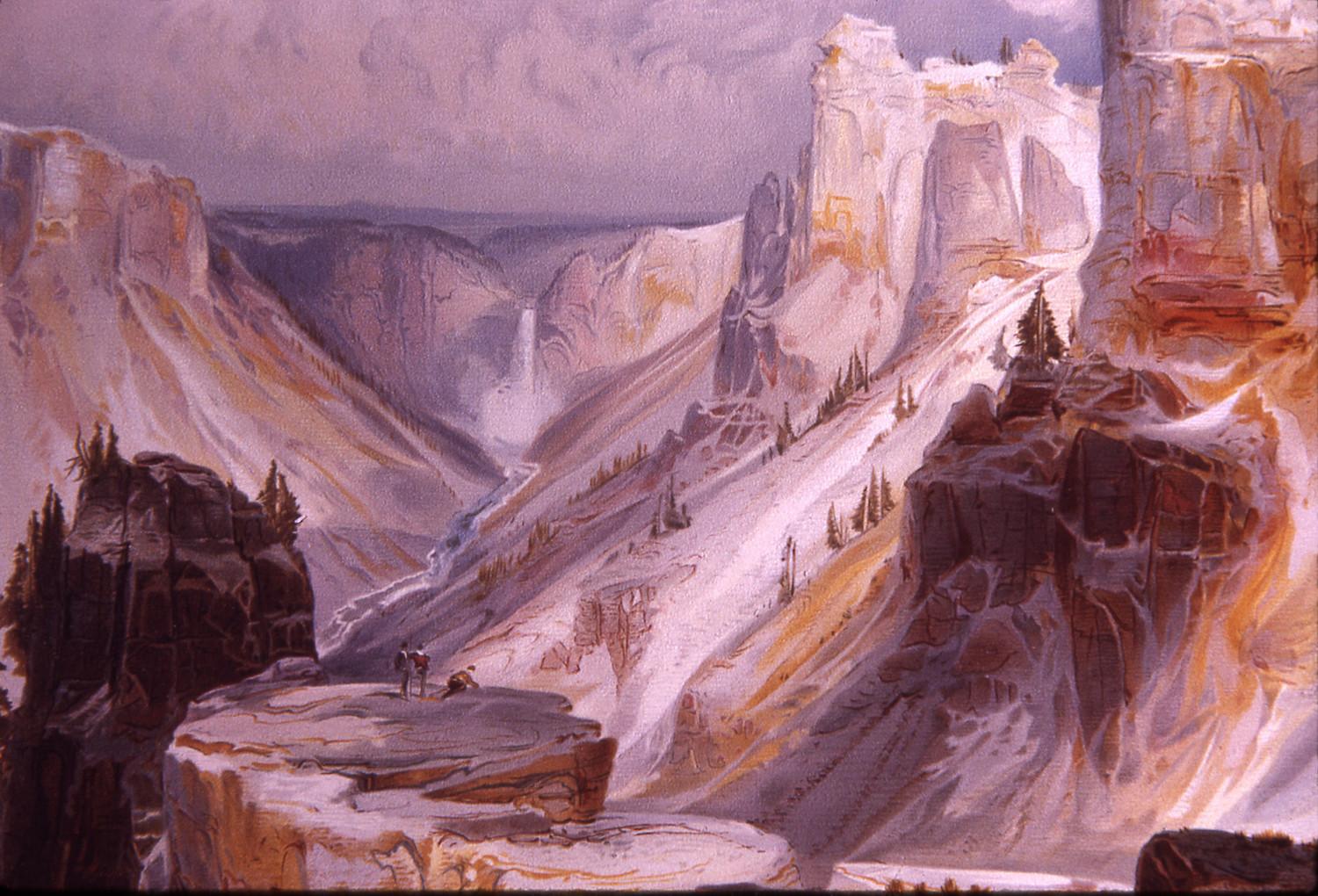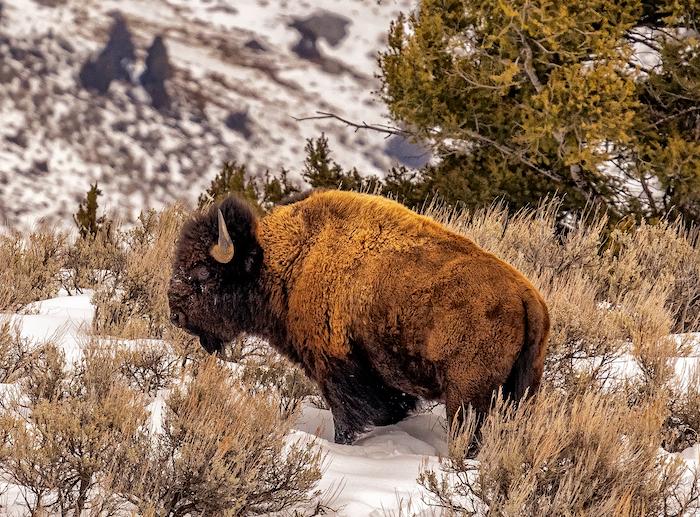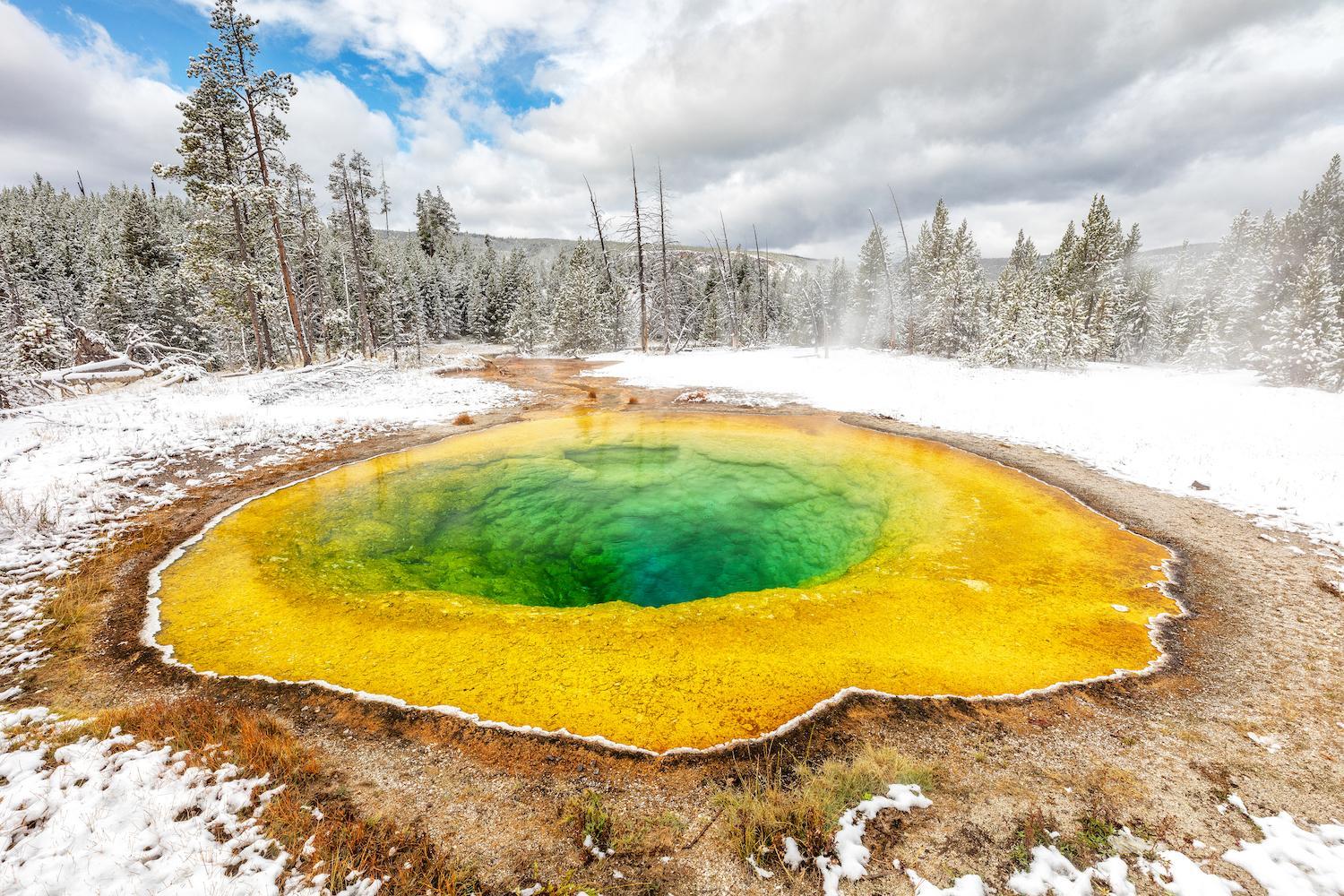
Yellowstone At 150: Challenges Go More Than Crowd-Deep
By Rita Beamish
“A thousand Yellowstone wonders are calling, ‘Look up and down and round about you!’” In an 1885 essay, John Muir waxed rhapsodic about the nation’s first national park, then just 13 years old. Yellowstone’s wonders still were little known except to Native Americans who had been on the land for millennia; East coasters assumed it was a “park” akin to New York City’s Central Park. At its 150th birthday, Yellowstone is an eternity away from that wrongheaded view, and enmeshed in a raft of modern-day complexities never envisioned its youth.
Historian Tamsen Hert recently came upon an 1883 archived newspaper reporting on plans for Yellowstone National Park’s first big hotel, an elegant Gilded Age structure. The Bozeman Avant Courier wrote of expectations that “there would be 50,000 visitors in the summer of 1883,” Hert recounted.
That was off by more than three decades, as it turned out. Not until 1915 did Yellowstone draw 50,000 annual tourists. “The railroad had barely reached that part of Montana in early 1883,” said Hert, a librarian in University of Wyoming library special collections.
Such obscurity is hard to imagine today.
A century-and-a-half after becoming the world's first national park on March 1, 1872, Yellowstone grapples with annual visitorship skyward of 4 million a year. Crowds around marquee attractions, crawling traffic, roadside soil erosion, trampled vegetation, and gross messes around park restrooms attest to the pressure. To be clear, all of that takes place along roads and developed areas that are about 7 percent of Yellowstone’s 2.2 million acres by park calculations.
But tourist hordes are hardly Yellowstone’s only stressors at 150. A tangle of thorny challenges ripple across the park and beyond. Among them: the mutally reinforcing destruction of warming, drought, wildfires, and non-native species, as well as human threats to keystone wildlife populations. All fester while the park faces a critical employee housing shortage, digs out from a massive maintenance backlog, and makes ends meet with reprioritizing under a budget restructuring.
To round out the pressure, Yellowstone staffing has been mostly static for a decade while visitation has soared. The park must enable visitor enjoyment while still meeting its mission under the National Park Service Organic Act to protect and preserve its natural and cultural resources for future generations: “They’re being continually asked to do more with either the same or fewer resources,” said Scott Christensen, executive director of the nonprofit Greater Yellowstone Coalition.
Indeed, the “massive big challenge” of managing visitation consumes about 98 percent of park budget and staff time, according to park Superintendent Cam Sholly.
Unlike some parks that have turned to entry reservation systems to manage their numbers, Yellowstone is not yet ready to lower that hammer, but likely will “at some point, some day” if numbers keep rising, Sholly said. Near-term efforts are on targeted parking and traffic flow alternatives, studying whether shuttle buses could make sense in specific areas, and a “multiyear process” examining high congestion spots as possible candidates for time-specific reservations. Because usage patterns across the sweeping park are so varied, most park-wide solutions are considered illogical.
“So much of the use is concentrated in a very small area, but the backcountry is still wild and still untrammeled and sees very few people. That’s good and we should be excited and proud about that,” said Christensen.

Thomas Moran accompanied a scientific expedition to the Yellowstone region in 1871 and put imagery to the "wild stories" of the place. Many credit his artworks with convincing Congress to protect Yellowstone as a national park/NPS
Yellowstone indeed remains a national gem, sprawling across the Continental Divide in a swath of iconic mountains, meadows, lakes, forests, and 2,500 miles of rivers and streams, along with its signature hydrothermal wonders. Yellowstone Falls crashes with dramatic power into the Grand Canyon of the Yellowstone River. Old Faithful and its partner geysers – the world’s largest repository of these storied features – boil up and spew their eruptions into the sky. Wildlife -- bison, wolves, grizzly and black bears, elk, moose and more -- roam the park just as those species did in the 18th century and earlier.
The park in its anniversary year is chipping away at its deferred maintenance backlog, estimated at $586 million in 2018, with three major road projects set to take a $103 million bite of it, and another $22 million in preservation work set for Historic Fort Yellowstone and Mammoth Hot Springs.
The Living’s Not Easy
At the same time, Yellowstone faces “a train wreck that is about to happen violently in front of our eyes,” Sholly said: a crisis in affordable housing for employees who are lynchpin to meeting every challenge the park has.
Forty new park housing units will open this year to replace dilapidated mid-century trailers. But that won’t address the dearth of affordable options for workers who have to find housing in nearby towns, a disaster hitting just as new hires are needed to replace dozens of older, longtime employees retiring in coming months and years, according to Sholly.
“I have money right now to hire people that I can't because I don't have housing capacity,” said the superintendent, who grew up in the park that his dad once served as chief ranger. The park is looking to shift more office jobs to the virtual world, and arrange leases in which the government helps with employees’ rent in towns. Whether the park should increase its own housing inventory is also a question, Sholly said.

There is no shortage of wildlife concerns at Yellowstone, including how best to manage bison/Rebecca Latson
Wildlife In The Crosshairs
Similarly, it’s not only what’s inside the park but what occurs in the greater ecosystem outside that often bedevils wildlife management these days. Adjacent states hold a web of economic, cultural and agricultural interests often diverging from Yellowstone’s aims, though collaborative negotiations sometimes bear fruit.
Former Yellowstone Superintendent Dan Wenk noted those complex dynamics going back many years: “To get the states and the National Park Service to have mutual and acceptable goals or plans for wildlife and how it migrates in and out of the park -- and I'm talking everything from grizzly bears, wolves, elk, pronghorn, bison, name the native species -- I think this is something that we're not close to where we need to be,” he told the Traveler.
Population growth and development in regions around the park also impacts the wildlife habitat that was once pristine, and provides more opportunity for negative human encounters with large wildlife, noted Christensen. “Habitat degredation around the park impacts that wildlife that move in and out of the park. It may not be in the park, but if you think more holistically about this being one 20-million-acre ecosystem, having a hotspot of degredation does have an impact overall.”
In ongoing wildlife challenges:
- Park neighbors Wyoming, Montana, and Idaho are petitioning the federal government to remove Yellowstone grizzly bears from Endangered Species Act protection, opening the prospect of renewed hunting outside the park -- after a federal court thwarted a 2017 attempt by the Trump administration.
- Montana and Idaho loosened wolf hunting and trapping restrictions last year to outcry from tribes and wildlife advocates who celebrate Yellowstone’s recovery of this top predator in 1995 as a huge success; park officials said Yellowstone packs were left “extremely vulnerable” by those decisions, and have confirmed 25 kills this hunting season, 19 of them wolves that ventured north into Montana. Eighty-nine wolves remain in Yellowstone packs.
“Clearly, we've got work to do on the wolf front for the future,” said Sholly. “We'll work as hard as we can to protect the wolf population in Yellowstone and also understand what state objectives there are. But there's no question that we need to focus on that. That's going to be a top priority this year with the state of Montana.”
- Management of the park’s growing bison herds has entered a new chapter with an environmental assessment launched this year. The park is circulating options that could grow the herd beyond the current limit of around 5,000. Once roaming the West by tens of millions, bison numbered just a couple dozen when Yellowstone began recovery efforts early last century. Now they are seen as competitors for livestock grazing terrain and a bulky, sometimes destructive, annoyance on roads and croplands.
In fact, however, and contrary to ranchers’ fears, bison are not to blame for transmitting brucellosis disease to domestic cattle herds. The National Academies of Science has concluded that elk, not bison, spread the disease to livestock.
“Yellowstone [bison] are very important for maintenance of the genome” uncontaminated with cattle genes, said Jason Baldes, tribal buffalo program manager with the National Wildlife Federation who believes the park herd should be allowed to grow. “They’re the best we’ve got.”
The park hopes to pare the controversial practice of sending bison to slaughter and expand its program relocating bison to Native American reservations as a way of controlling numbers. Decision on an updated management option is expected in about two years.
Hotter, Drier
Looming over Yellowstone’s present and future are fundamental ecosystem changes tied to global warming. Temperatures are hotter than in the past 800,000 years and are expected to keep climbing, according to Greater Yellowstone Climate Assessment released last year by the U.S. Geological Survey and other experts.
Snowfall has declined 25 percent below 8,000 feet. Winter is shorter. With grassland changes, bison are migrating later. Even Old Faithful’s less frequent eruptions are tied to more scarcity of water, research indicates.

How will changes in precipitation affect the park's geothermal wonders?/Rebecca Latson
Warming has yielded “drier conditions conducive to fire, widespread die-offs of mature whitebark pine trees, invasive species outbreaks, and changes in the timing and rate of snowmelt are affecting fish spawning and the health of aquatic systems,” Sholly wrote in a forward to the USGS assessment.
“It’s very difficult to say what it is going to look like 50 years from now,” is the sobering observation of Ann Rodman, a scientist who coordinates park climate change response strategies.
“Historically, this ecosystem, with Yellowstone as the center of it, has stored large amounts of snow in the spring and then slowly released it over the summer, replenishing streams and adding to groundwater resources,” she said.
But earlier, faster snowmelt means lower summer flows and warmer water temperatures. Wetland lakes and kettle ponds are drying up and may not recover, park scientists say; bad news for moisture-dependent plants and habitat of related species like boreal chorus frogs and some birds. The park has intermittently been closing off fishing when warm, low-flow conditions stress the cold-water fish.
Sholly said he wants the park to be more aggressive against invasive species like voracious cheatgrass that team up with global warming to become especially deadly. Spreading in parts of the park, cheatgrass stays hardy in parched soils and is better at fueling wildfires than the native vegetation it crowds out. The risk of wildfire was so severe last year, with fires blazing around the West, that the park went to full-on suppression when fires sparked, rather than the usual healthy-forest practice of letting low and moderate fires burn to keep brushy fuels from building up, Sholly said.
“I'm not where we want to be,” on global warming response, Sholly said. “I want to have a more robust climate structure here that includes slightly more team members working in this critical area” to inventory and prioritize which species are more likely to adapt and where the park should focus preservation efforts. “We need to be a lot more organized in how we strategically approach the future and where the impacts are going to be most felt.”
Original stewards
Yellowstone’s anniversary year is putting a spotlight on native tribes that once roamed the region, in keeping with the Park Service-wide effort to elevate the original inhabitants’ often overlooked role as stewards of lands that later became parks.
A heritage center near Old Faithful will feature tribal artists, scholars and presenters through September 30. The park will welcome a teepee village where tribe members will share indigenous history and culture with visitors in July and August at the north entrance – although it’s up to tribes to raise the funds to build the teepees and engage tribal participants, said Shane Doyle, a Crow tribe member and educator on tribal history who’s involved in the effort.
Doyle welcomed the park’s outreach, saying, “There’s never been a presence of native people in Yellowstone, since Day 1,” save for a few scant references. “We’re looking at a significant change in policy from the park. And it remains to be seen if the more welcoming culture of the park will lead to a new day in terms of native people’s presence there.”
Yellowstone needs to learn from its checkered past, in the view of its superintendent. Ecologically, it’s a long way from the days when predators were all but vanquished, destructive non-native fish were stocked for anglers, and bears were feasting on repast from garbage bins.
“A lot of good things have happened,” in restoration and conservation, Sholly said. “But it’s not time for us to relax. It’s an important point in time to … reflect on the lessons of the last 150 years and really do our best to not repeat some of those mistakes, first and foremost, and then really be as proactive as we possibly can in identifying and addressing what actions are necessary, whether it be an annual visitation or climate change challenges or whatever in the future.”

Comments
A shuttle bus between Old Faithful Village and the Norris geyser basin, with stops at basins in between, would help the traffic and parking congestuon. But I doubt park officials can do it, given that the shuttle would compete with the expensive and profitable private bus tours run by the concessionaire, Xanterra.
Thanks Jenny. The shuttle suggestion really caught my attention as a great way to move the growing number of visitors around Yellowstone. Of course there's nothing like being in your own vehicle, stoping, and turning off the engine while the bison herd moves across the road, and all around and in between the cars, but viewing from shuttle windows would probably be just as memorable. I think this an excellent idea and one that I'm surprised has not already been in place, except maybe for the yellow bus tours mentioned, but I believe there is plenty of room for both as the shuttle is just a shuttle, reducing the number of overall vehicles and congestion in the park. Perhaps a pilot program of the above suggested route/loop and using electric buses! I can just see the questions from visitors: Is there a shuttle that will take us to the Grand Canyon of the Yellowstone or Lamar Valley or Lake Yellowstone? Also, if there was a shuttle only lane just in and around the more congested areas, that would create some additional incentive to take the shuttle as well as opportunities for folks to meet folks! You know, Where are you guys from?